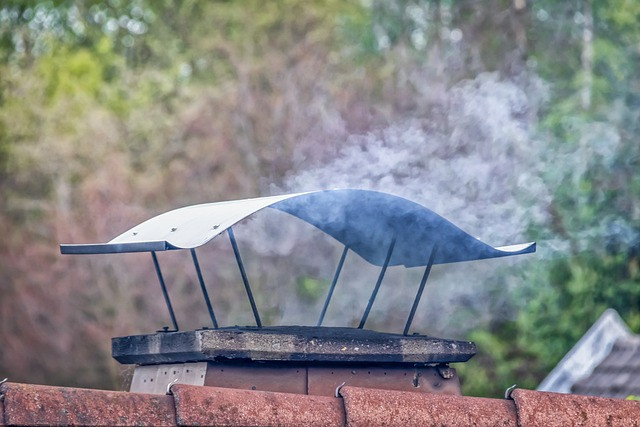Do you ever wonder about the amount better air quality you breathe inside your home? Clean air is vital for our health. Just like we test the water we drink, we can also check our home’s air quality. This article will show you easy steps on how to test air quality in your home. Let’s make sure you’re breathing the best air possible!

What is Testing Air Quality in Your Home
Test air quality means checking the air inside your home for potential pollutants there. These can be things like dust, mold, or chemicals. Some of these pollutants can make us sick or cause allergies. By testing the air, we can find out what’s in it. Once we know, we can take steps to less air pollution and make the air cleaner and safer for everyone.

Reason You Should Know How To Test Air Quality in your home
Knowing how to test air quality in your home is important. First, clean air is vital to our health, and some pollutants can’t be seen or smelled, so testing is the only way to find them. Also, when you know the quality of your air, you can make changes to improve it. Here is a list of reasons why.
Health First: Breathing cleaner air reduces risks of allergies, respiratory problems, and other health issues.
Invisible Threats: Some pollutants are odorless and invisible, making them hard to detect without testing.
Improve Comfort: Clean air can enhance sleep quality and overall comfort in your living spaces.
Protect Vulnerable Members: Babies, the elderly, and those with chronic illnesses are more susceptible to poor air quality.
Increase Home Value: Homes with good air quality can be more appealing to potential buyers or renters.
Save on Medical Bills: By preventing health issues related to air quality, you might save on future medical expenses.
Peace of Mind: Knowing your home’s air is clean allows for a more relaxed and stress-free environment.

Here are My 3 Easy Steps to Testing Air Quality in Your Home
Poor indoor air quality can lead to many health problems and issues, from allergies to respiratory problems. Fortunately, checking the air quality in your home doesn’t have to be complicated. Just follow a few weeks my easy steps to get a better understanding of what you’re breathing in every day. Tools Needed: home air quality monitor.
Step 1 – Visual Inspection
Start by looking around your home. Check for any mold growth, excess dust, or any unusual odors. If you see damp spots, this could be a sign of mold.
Step 2 – Use Air Quality Monitor
Purchase a home air quality monitor. These devices can measure specific pollutants, like carbon dioxide, volatile organic compounds (VOCs), and fine particles in the air. Just turn it on, and it will give you readings.
Step 3 – Check Home Ventilation
Make sure the fresh air in your home is well-ventilated. Open windows and doors regularly. If polluted air in your home feels stuffy, consider using fans or air purifiers to help circulate and clean the air.

Key Things to Think About When Testing Air Quality
When you check the air quality index of your air filters and your home’s air, you need to be very careful. Look everywhere, even in hidden places. Basements, attics, and under sinks can hide mold. Think about your home’s past too. If water ever got inside, mold might be hiding.
Using good tools is super important. Get a trusted indoor or outdoor air-quality monitor, and learn how to use it right. Place it in the right spot in your home. Remember, sometimes the outside air isn’t clean either. If the air outside is bad or if it’s allergy season, keep your windows closed. Using air purifiers and clean filters can help keep your home’s air fresh and safe.
How To Take Testing Air Quality to The Next Level
To take your air quality testing to the next level, consider getting a professional air quality assessment. Experts have advanced tools and can check for more than just mold and dust. They can test for harmful chemicals, gases, and even radon, which is a dangerous gas you can’t see or smell. With this report, you’ll know exactly what’s in your air and get advice on how to make it even cleaner.

Alternatives To Basic Air Quality Testing
DIY Test Kits: Buy kits at hardware stores to test for things like mold, radon, and VOCs. Send samples to a lab for results.
Indoor Plants: Use plants like spider plants, peace lilies, and snake plants. They can help clean the air.
Smart Home Devices: Some devices check air quality all the time and give updates.
Community Resources: Local groups or agencies might test air quality for free.
Rent Equipment: Instead of buying, consider renting air quality monitors for short use.
Educate Yourself: Go to workshops or classes about indoor air quality to learn more.
Remember, any step you take helps make sure the air in your home is clean and safe.

My Final Thoughts On Testing Air Quality
I’ve come to understand we need to test air quality in our homes. Through simple steps, such as visual inspections of air ducts, using air quality monitors, and ensuring proper ventilation, we can gauge the purity of the air we breathe daily. Moreover, there are various alternatives and tools available, from DIY kits to smart devices, which can enhance our understanding of indoor air pollution and give more detailed results.

Frequently Asked Questions
How can you test air quality in your home?
Indoor air quality monitorAn electronic device that you can test air quality for a range of pollutants. It can detect harmful odorless gasses like carbon monoxide and radon. Depending on the model, it may also detect volatile organic compounds (VOCs) or pollutants such as airborne particulate matter.
What are the symptoms of poor air quality in a house?
headache, eye irritation, fatigue, dry throat, sinus congestion, dizziness, and nausea
How is air quality measured?
Air quality is measured with the Test Air Quality Index or AQI. The AQI works like a thermometer that runs from 0 to 500 degrees. However, instead of showing changes in the temperature, the AQI is a way of showing changes in the amount of pollution in the air.
Do I need an air purifier?
Maybe, not a bad idea
Should I install carbon monoxide detectors on every level of my home?
Yes
When should you hire a professional air quality service?
If you are not confident with the results of the home test or would like more detail.